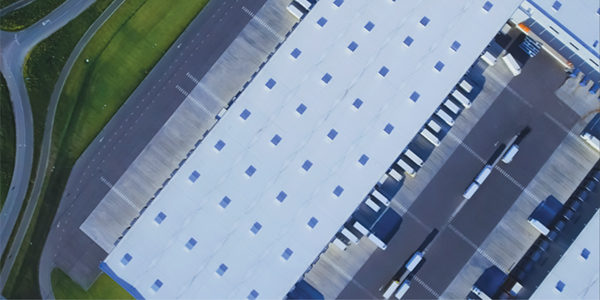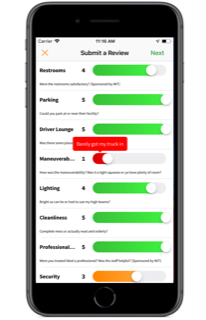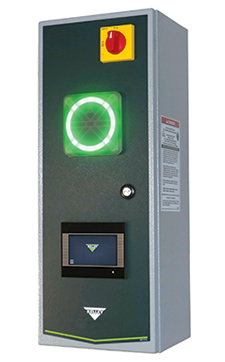Cleaning up the yard

Moving goods between DCs, stores, and suppliers is an expensive operation, and turbulent market conditions of recent years have pushed the price tag even higher, putting renewed importance on running an efficient freight yard.
Many shippers have spent the past year wooing fleets and independent truckers in a historically tight market, trying to secure the trailer space to ensure their freight is moved on time. Studies show the capacity crunch has eased in recent months, but trucks are still a hot commodity, thanks to an expanding economy, a shortage of drivers, and stricter enforcement of hours-of-service (HOS) limits through electronic logging devices (ELDs).
Those factors have focused a spotlight on dock and yard management, as warehouses strive to reduce their truck waiting and turnaround times and become a "shipper of choice."
But is improving dock and yard management more of an art or a science? Industry leaders say it's a little of each and prescribe a combination of technology and good old-fashioned hospitality.
"We want carriers to have a smooth, seamless flow into and out of facilities, but for years, the facilities have underestimated the challenge," says Rick Blasgen, president and CEO of the Council of Supply Chain Management Professionals (CSCMP). "Industry needs to do a better job of keeping goods flowing and keeping trucks moving."
The modern supply chain has access to technologies like global positioning system (GPS) tracking and radio-frequency identification (RFID) that allow businesses to know exactly "where their stuff is." But while that is a definite improvement over the mere estimates of previous decades, technology can't solve everything. "You also have to treat drivers well. Give them a bathroom or a break room, so they can rest a bit," Blasgen says.
TIME IS MONEY
In an effort to improve interactions between shippers and carriers, CSCMP recently created the "Strategic Shipper Program" through its National Shippers Strategic Transportation Council (NASSTRAC) division. The voluntary program, which was created in response to industry feedback about scarce capacity and rising freight rates,requires participating shippers to follow a particular code of conduct in managing their carrier and supplier relationships.

Dock411's app for drivers and shippers
One of the program's main goals is to help reduce truckers' turnaround time at shippers' facilities through the use of Dock411, a dock information app provided by a St. Charles, Ill.-based software developer of the same name. The platform allows shippers to upload videos, photos, and info on gate policies and average wait times at specific facilities, which drivers can then access via a smartphone app prior to their arrival.
"A driver can see when he's 10 minutes away which gate or which door to go to, and receive that information while he's on his way," Blasgen says. Other helpful information might include the location of security checkpoints, pictures of signage at the facility, or even warnings about potholes. Some facilities post enlarged quick-response (QR) bar codes on signs outside their yards, which truckers can scan to get instant information on that facility.
"If you've ever been to one of those big industrial parks, it can be confusing," Blasgen says. "But when you're hauling a 53-foot trailer, you don't want to be confused" since it can be tough to find enough space to turn the vehicle around.
Basic communication can go a long way toward getting drivers in and out faster, agrees Mark LeGrand, vice president of sales at Dock411. What drivers really want to know is the "basic blocking and tackling," he says. "It's about the last 500 to 1,000 feet: how to get to your facility, how to get onto the yard, who to talk to at the guardhouse, and what amenities there are on site—or close by—if they're going to be there for several hours."
The end goal, he adds, is to get drivers back on the road as quickly as possible. "From a driver's standpoint, miles are money," LeGrand says. "And the longer they're detained, the longer they're not earning money."
BRINGING DOCK OPS UP TO SPEED

4SIGHT's Connect Digital Master Control Panel
In the meantime, many facilities are making a fresh effort to tighten up operations and cut turnaround times, often by installing yard and dock management systems, says Rhonda Reece, senior business analyst and scrum master, Entrematic Loading Dock Americas, at 4Sight Yard & Dock Management, a unit of access-solutions conglomerate Assa Abloy that offers yard, warehouse, and loading-dock solutions. In that regard, she notes, they're making up for lost time in a sector that has seen transformative change inside the warehouse—ranging from the introduction of robotics to the implementation of warehouse management software—but very few changes outside in the yard just a few feet away, she says.
With better management tools, facilities can take basic steps to speed up yard processes, such as pre-staging a dock to make sure it's ready to handle a truck as soon as it arrives. That and other tactics can help them get trucks in and out as quickly as possible, minimizing the impact on drivers' hours-of-service time, she says.
As for what features buyers should look for in a good yard and dock management system, Reece puts ease of use at the top of the list, since many of the people using the product aren't accustomed to navigating software menus. "You need easier ways to get people to enter things into the system without making mistakes—like scanning QR codes—because once you enter something wrong, that information populates throughout the ecosystem," she says.
Other useful features include a trucker check-in system, the flexibility to customize processes for specific sites, documentation of arrival and departure times to avoid detention fees, and the ability to integrate with other software platforms, she says. The company plans to add all of those features to its 4Sight Connect products, coming in the fourth quarter of 2019 and first quarter of 2020, she says.
Data integration is a key factor in improving the flow of freight, agrees Jarrett Leesch, vice president of business development at Inconso, a unit of German logistics technology provider Körber AG that sells yard management systems (YMS).
The best YMS products allow truckers to reduce time spent in the yard by pre-booking arrival and loading times, while also giving shippers updates on truck arrival times for scheduling and staging purposes, Leesch adds. "Visibility is the key to bringing the two sides together," he says.
REPUTATIONS MATTER
Turning to the hospitality part of the equation, experts agree that a big part of improving dock and yard management is extending basic courtesies to drivers and treating them with respect.
As simple as that might sound, many facilities fail to meet even that basic standard, Dock411's LeGrand says. He notes that certain industry sectors have become notorious among truckers for their treatment of drivers. "Google around, and fair or not, the grocery industry is getting a black eye," LeGrand says. "[Drivers] don't want to go [to grocery DCs] because detention times can be over four hours—the ELD data backs that up. ... So drivers feel it's cost-prohibitive to even go there."
It's not just lengthy detention times that can earn a facility a bad rap. Another common cause of driver discontent is the failure to provide basic amenities, LeGrand says, citing the example of a facility that bans drivers from using a bathroom during their visit because of security regulations or health codes that apply to food-processing operations.
But restoring a tarnished reputation can be surprisingly simple, LeGrand says. He cites the case of one Dock411 customer that had prohibited drivers from exiting their vehicles because of safety concerns about pedestrians wandering the yard. It solved the problem by buying a $100 picnic table from a big-box store and setting it up under a tent canopy, creating a makeshift break room that gives drivers a place to safely get out and stretch their legs. In another case, a DC whose rules prohibited truckers and other visitors from using bathrooms inside the building solved the problem by installing a portable toilet right at the guardhouse.
Not all problems are so easily solved, of course. It's much more challenging to bring order to a chaotic yard than to install a picnic table. But with today's technology tools—and maybe a portable toilet—shippers can boost their chances of securing the capacity they need and facilitating a seamless flow of freight through their facilities.
When that happens, everybody wins. "Looking at the overall shipping community, time is money," LeGrand says. "At the dock, every minute counts, and it impacts somebody's bottom line."
Related Articles

Copyright ©2024. All Rights ReservedDesign, CMS, Hosting & Web Development :: ePublishing